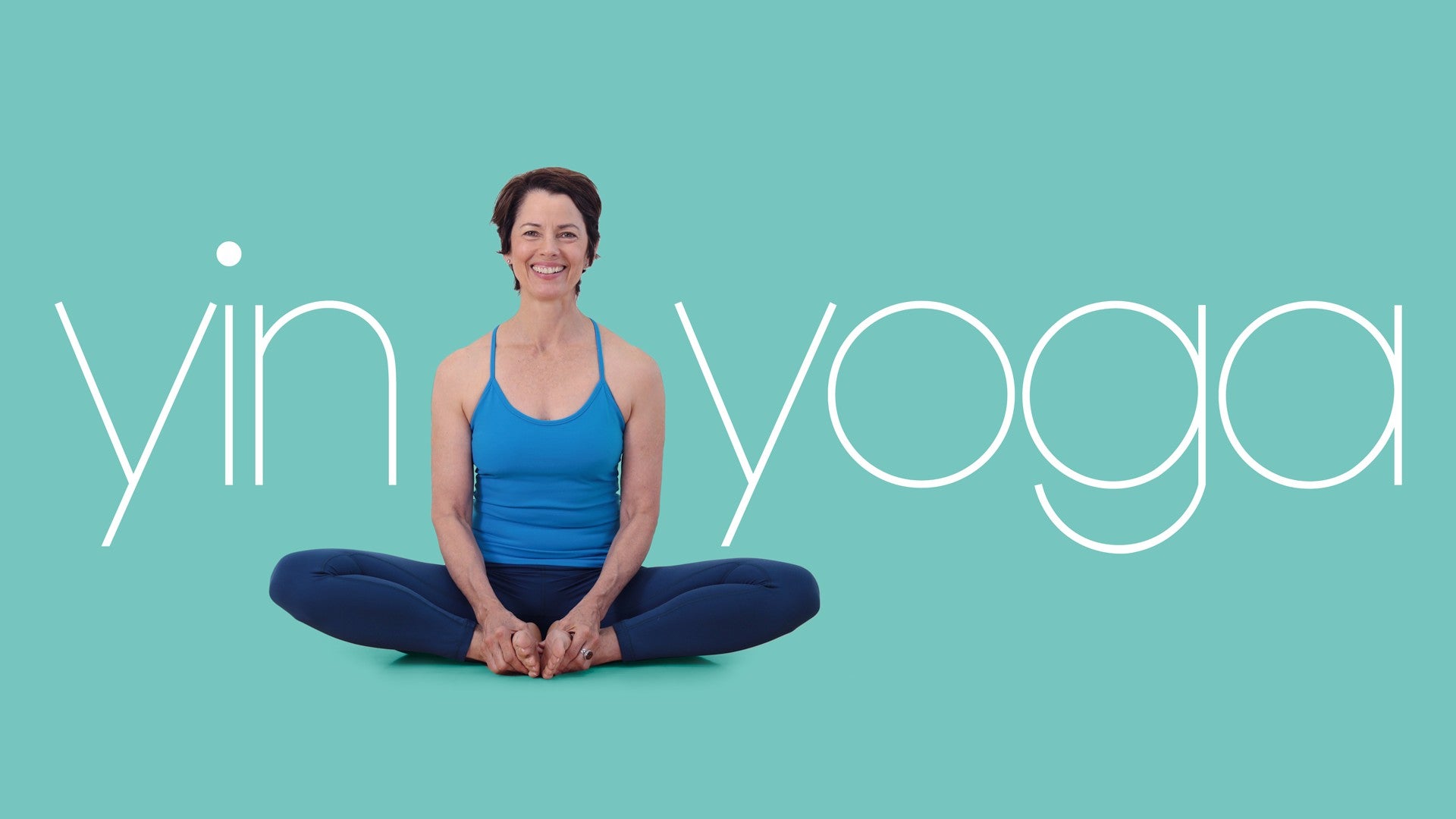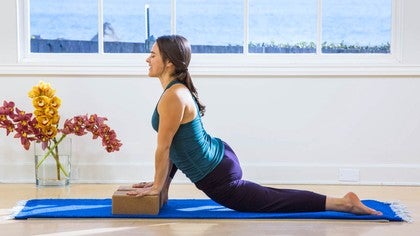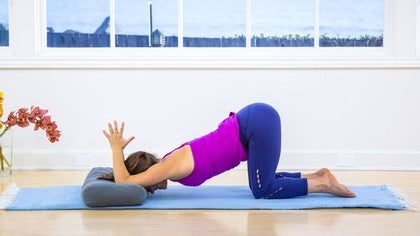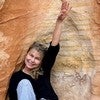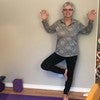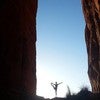Description
About This Video
Transcript
Read Full Transcript
Welcome back. This is a short and quickie when you don't have much time but you want to get the job done. So we're going to start in what I affectionately call toe torture pose or broken toe pose. So I'm going to turn so you can see me. You'll tuck your toes under just to begin to stretch and get into the connective tissue, the soles of the feet. Depending, you might stay where you are. You might walk your hands up your legs and maybe bring your sitting bones onto the heels and drawing the shoulders down the back. And this is a spicy one. All right. Allow for exhale, softening the face, the jaw. You might stay here for a few breaths.
If you can tolerate it, you might bring the hands behind your back, kind of wiggle the hands to the elbows and then maybe softening the chin down towards the chest and rolling the left ear towards the left shoulder. Getting into that right part of the neck. Breathing. And then rolling the chin to the chest and right ear towards the right shoulder. Beginning to feel some sensation through that left part of the neck. Breathing. Nice. And then roll the chin back to the chest and then let the arms free out. Nice.
And then just take a moment as you release, sit back on the heels if it's comfortable to sit in heroes or virasana for a moment. Just letting everything settle. Nice. Full exhale out of the mouth. And from here, we'll transition into a butterfly shape. Coming into baddha konasana, you might choose to bring support underneath your sitting bones. And in butterfly, the feet are further away from the pelvis, more of a diamond shape. And then bring the hands to the inner legs and just begin to thumb the inner leg lines. You might feel some tenderness through the legs, the ankles.
It usually feels pretty good to get into the soles of the feet here. Like you're kneading dough, getting into the feet and finding a rhythm here. And you might just stay here the whole time. You might begin to release into a forward fold. And oftentimes it can feel nice to wobble a little bit from side to side. And we're allowing gravity to assist in this release. So allowing the weight of the head to surrender.
Notice the quality through your hands. We're offering ourself to this shape for about three minutes or so. And with the intention of awakening, stretching, what's called the connective tissue, the theory is that the connective tissue works a lot like saran wrap, where it literally shrink wraps around our body as we sit for long periods of time or as we sleep. The connective tissue kind of shrink wraps around the bones, the muscles, the tendons, ligaments, joints. And it's believed that the long pass of static holds help to really awaken the connective tissue, bringing juice and synovial fluid back into the tissues.
Just allowing for a bit more openness, flexibility, elasticity. And so it might feel a bit dull and achy around your whole spine, the low back, the sacrum, the hips. And one of the main principles is we're looking to explore and experience an appropriate edge of sensation. And as it's useful, breathing into where you feel the edge or sensation. Perhaps allowing the inhale to create a bit more space and allowing the exhalation to encourage this process of softening and releasing the muscles around the bones.
For the last few moments in this shape, what would it feel like to allow the shape, to allow butterfly to have a bit more of you? Releasing through the head, softening through the mouth, the jaw, even allowing the ankles and the soles of the feet to open. Beautiful. And then from this stillness, begin to slowly round your way up. Really take a generous pause as you come up to notice how you feel. Allow it to feel wide through the base of your skull.
Feeling the shoulders stripped down the back. Allow for an inhale. Nice, full exhale. And then just lean back, free your legs for a moment and let yourself wobble little side to side here. And it can be nice to allow for a bit of movement in between these longer static holds. From here we'll move into a spicier outer hip opening shape called box pose.
You might know it as double pigeon. So we're going to take our right ankle and stack it more or less over the left knee and that right knee over the left ankle. Sometimes this is called like fire logs or logs of fire. And you might find your right knee is totally lifted and you might prop a prop underneath it or a blanket. And allowing yourself to wobble or wiggle and begin to drop into sensation.
Usually in the shape there's a lot of information and sensation through the hips. And notice the quality of your breath. Become aware of any areas you can soften and relax the jaw. And if the sensation is like overwhelming or if it feels internally like painful, the knee, the hip, you'll want to come out of the shape and modify it so that it feels safe and better for your body. One of the things I love about this in practice is that it is edgy, curious.
And so it requires a lot to kind of slow down, pay attention and listen. You might stay where you are. You might choose to begin to lean forward a bit. This will obviously increase the flavor, the sensation through the hips, through the low back. Whatever you are here, allow for an exhale and feel earth down through the sitting bones, feel earthy through the pelvis, the hips.
The allowing the ground to have all of you. You can call in the element of water here, little seaweed swaying from side to side can help to cool the fire in the hips. And if you've gone too deep, testing that edge, you might back it off a little bit. I'm always reminded by something Eric Shiffman once said. He said the fastest way to move deep in an asana practice is slowly.
So much wisdom there. As few moments you might feel through the face, the jaw, the hips. And then gradually make your way up and out. And then carefully find a way to free your legs and shake it out. What a relief coming out.
And then we'll find the second side. So most likely it's your left ankle coming on top of the right knee and that left knee on top of the right ankle. You kind of toe heel the right foot out a bit so it's stacking more or less and offering any props as needed underneath that left knee. Right away this side might feel completely different depending on your hip, your ankle. Notice the quality of your breath.
Allow for a generous exhale through the mouth. And on this side you might stay right where you are, sitting up. You might gradually begin to ease into a forward fold, maybe releasing the weight of your head. And allowing the body to invite you in. And then the magic ingredients, the yin yoga practice, time, so we're offering ourselves for a length of time in these shapes.
Moving towards perhaps a quality of stillness within whatever movements are happening internally in the mind, the breath. Becoming aware of areas, layers we can consciously begin to soften, so this idea of allowing the muscles to soften or even melt around the bones. Getting into a more passive, kind of receptive relationship in this practice. And finding that appropriate edge of sensation. And that edge may shift and wander and move moment to moment, day to day.
Softening through the belly, feeling earth through the legs. Slowly as you're ready, making your way up and then carefully free your top leg, and it can feel uncertain coming out of these poses after holding them for a while. You can shake the legs out a little bit if it feels nice, you can lean the hands back and find a little side to side shimmy through the spine. And then from here, making our way into saddle. This is one of my absolute favorite go to poses, it's not for everyone, so as you watch, really pay attention and listen to what's best for your body using props to support your body or finding another shape completely.
But we'll bring the big toes together, touching, and then the knees wide, so it's similar to Supta Virasana or heroes pose, however the knees are wide so there's a little bit more compression happening through the lower part of the back, lower spine. And I'm going to bring a bolster lengthwise behind me, a little higher up, so it's going to support the upper back and spine. So this might be your saddle, you're welcome to stay here. If it's appropriate, if it makes sense for your body, you're going to begin to walk your hands back a bit. And then maybe coming onto your forearms, and then maybe releasing onto the bolster or the earth. And taking your time to settle in. Again, the knees are wide and saddle and the big toes are touching.
So you might even feel like the soles of your feet underneath your buttocks. If it feels right, you might stretch your arms out to your sides and softening the shoulders down the back. And then we hang out here for a bit. So obviously there's a big stretch, there's a lot of sensation happening through the front of the body, stretching the thighs, the muscles. And similar to Sphinx or Seal, as we come into those passive backbends, it can feel kind of dull and achy bit of pooling pressure around the low back and the sacrum here in this shape. So if it feels safe and right, allow the lower back to actually soften and kind of hang towards the earth.
Again, if you've gone in too deep, you want to make your way out or use support so it feels right for you. Let's check in with the quality of your breath. And you might keep your arms out to your sides. You might choose to stretch the arms overhead, be finding a little cactus opening through the shoulders, or resting the back of the hands on the support. And in this opening, allowing the heart to soften. Be inviting a gentle rooting or softening of the heart towards the earth.
And check in with the face. You might notice how the feeling or sensation changes, evolves, morphs with a bit of time here in the shape. And that's the beauty of this approach is we have this magical ingredient of time to be with, feel, track, allow, accept. Whatever is arising. And I find this approach can help to increase our capacity to hold the tension of opposites. The ease and softening and water element within the fire, within the intensity, within the burning sensation, within the unknown, curious sensations.
And last minute or so here. And if you become aware that you've jumped into the deep end and you want out, please come out. Last few moments you might invite a through the heart, the belly, the face. And then gradually, when you feel ready to come out of the shape, we're going to use our abdominals to support us in getting out of this. So it requires now shifting into a bit of effort. So you're going to bring your forearms onto the ground, draw your chin into your chest and then use your abdominal muscles to help you lift up and press your way up to a seat.
Maybe easy, maybe not so graceful and take a moment to pause. From here, we're going to come into a caterpillar to stretch the back of the legs after that intense opening. You might bring a bolster blanket underneath your sitting bones and just stretch your legs out. Allow yourself to passively round and release your spine. So countering that bright, intense backbend. And allowing the head, the spine to hang as useful. You might bring some attention and breath into the back body.
Backbending tends to be a bit more stimulating and energizing and somewhat stressful to our nervous system. Whereas the forward folds, forward bends tend to be a bit more calming and soothing, offering this quality of introspection. And then slow as you're ready, begin to round or roll your way up. Let's take a moment to pause, catch that clearing breath. Exhale.
From here, let's roll our way onto our back for windshield wipers, just to invite some movement, a little spinal twist in, stretch the arms overhead, bring the feet nice and wide. And then let the knees go side to side. Feel that space between the feet and cruising on to the inner outer edges. And the head might roll with the knees or away from the knees. More rounds, finding this fluid movement. Nice, letting the knees fall over to the right. You might stay here and find a bit more length through that left arm. You might bring your right ankle on top of the left thigh and then just letting that right knee fall towards the earth.
Maybe clasping the right hand around the left wrist, breathing wide into the left side body. Releasing the wrist, releasing that right foot to the earth. Inhale the knees up and exhale over to the left. And you might pause here and reach through your right arm. You might choose to bring your left ankle on top of the right thigh, maybe clasping the left hand around the right wrist. Left knee falls towards the earth as the hip opens, breathing wide into the right side body. Feeling the lungs stretch into the intercostals.
Nice, as you're ready, releasing that left foot, releasing the wrist, inhale the knees up and draw them into your chest and let yourself rock a little side to side. You might keep the knees into the chest, you might reach up and find happy baby for a moment, drawing the knees towards the earth, and maybe there's some rocking from side to side. Nice, long through the neck. Nice, and then just slow, releasing the feet, draw the knees into the chest. You might stretch out for Shavasana, you might rock and roll your way up to a seat. And we'll just take a few moments to sit together to close our practice, any comfortable seated shape.
So the practice lends itself to a more comfortable, spacious, seated meditation. You feel a bit more opening through the hips and freedom through the spine. Allow for a exhale. When you're joining the hands together at the heart, we'll close with the sound of om breathing in. Namaste, thank you.
Yin Yoga: Alana Mitnick
Comments
You need to be a subscriber to post a comment.
Please Log In or Create an Account to start your free trial.
